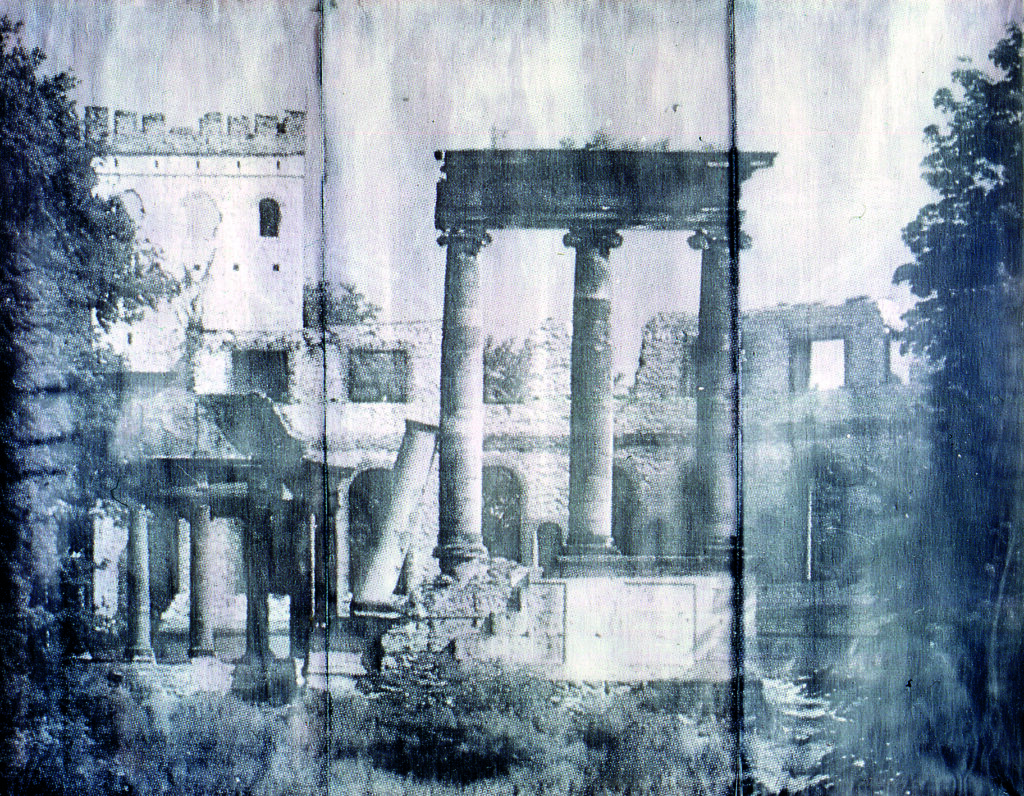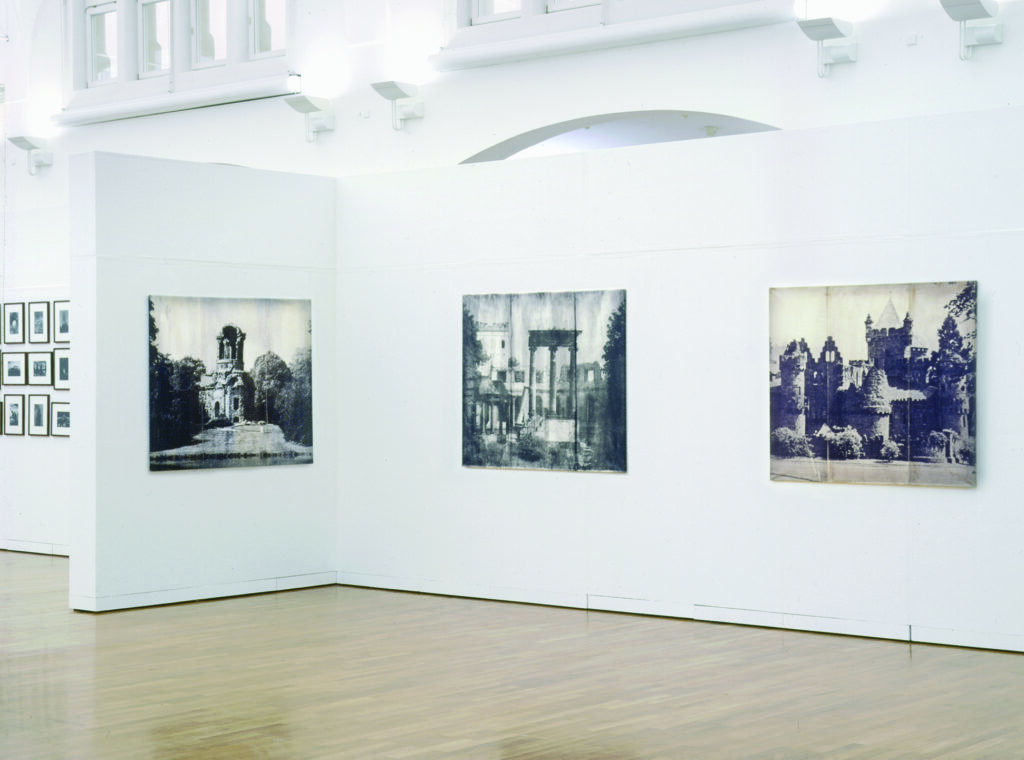
In my work “Artificial Ruins,” I first examine the history and purpose of artificial ruins in landscape gardens. These architectural elements, which emerged in the 18th century, particularly in English and continental landscape parks, were intended not only to add a picturesque accent to the garden, but above all to create an atmosphere of transience, melancholy, and cultural depth. The artificial ruin is always an image in two senses: it stands for an imaginary, historical past, but at the same time it is a deliberately staged and constructed sign within an overall aesthetic concept. Its pictorial character is revealed in the fact that it functions as a placeholder for memory and lost time—less as an authentic relic than as a culturally coded object.
I am particularly interested in the close relationship between the topos of ruins and photography, as W. G. Sebald also addresses in his novel “Austerlitz.” Sebald suggests that both ruins and photography function as forms of memory and archiving, but always keep a gap, a loss, a break visible. Both are media of the past: the ruin is the remnant of a bygone era and a sign of what is no longer there; photography is the indexing of a moment, an index of what once was; it stores and preserves, but above all it makes the absent, the lost, tangible.
I have taken up this visual conception of ruins and its parallels to photography in my artistic research and transformed it experimentally. My starting point was images of artificial ruins from gardening and city magazines, which I photographed, projected onto canvases coated with photo emulsion, and deliberately manipulated during the development process in the darkroom. By using additional light sources during development and fixing, I was able to create an artificial aging process, so that the motifs were transformed into a state of decay and fragility even as they were being created.
The decisive element of my methodology is that I deliberately do not complete the development and fixing process. The photographic surfaces remain open for years and decades and are subject to constant change. The images thus continue to ruin themselves and age over time, decaying and fragmenting—the process of decay becomes an essential aesthetic and epistemological dimension of the work. In this way, ruinousness remains not only a theme, but also manifests itself as a real, ongoing process in the medium of photography itself.
In the interplay of both media, the ruin becomes a model for photography, and photography appears as a recurring ruin of time. Both are not only signs of the past, but processes that materialize time, loss, and transformation and make them tangible. With this approach, I draw on art-theoretical and cultural-scientific traditions of ruin research, from Aby Warburg’s Mnemosyne project to Aleida Assmann’s theory of memory to image-anthropological and psychogeographical approaches. It is precisely this “Sebaldian” dimension—the gap, the rupture, the lingering effect of memory, and the inconclusiveness—that makes “artificial ruins” a central field of experimentation for me in artistic image research.
